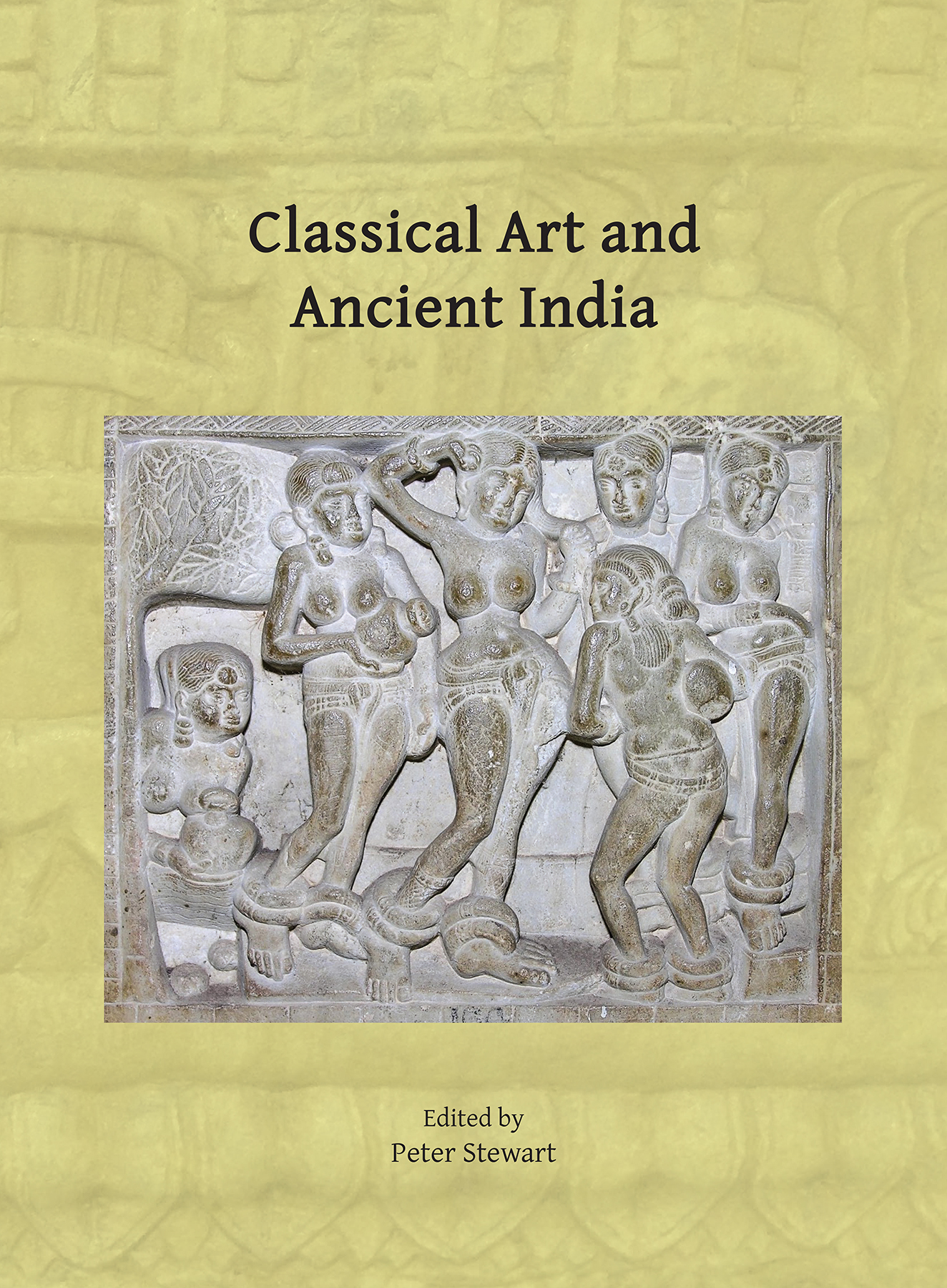
Classical Art and Ancient India
Proceedings of the Workshop Held in Oxford, 21-22 March 2023
edited by Peter Stewart
Published May 2025
This volume explores India's connections with the Mediterranean and Western Asia during Graeco-Roman history, highlighting artistic exchanges. Based on the 2023 Oxford workshop, it includes insights from international scholars, refining our understanding of cross-cultural artistic currents and questioning underlying assumptions.
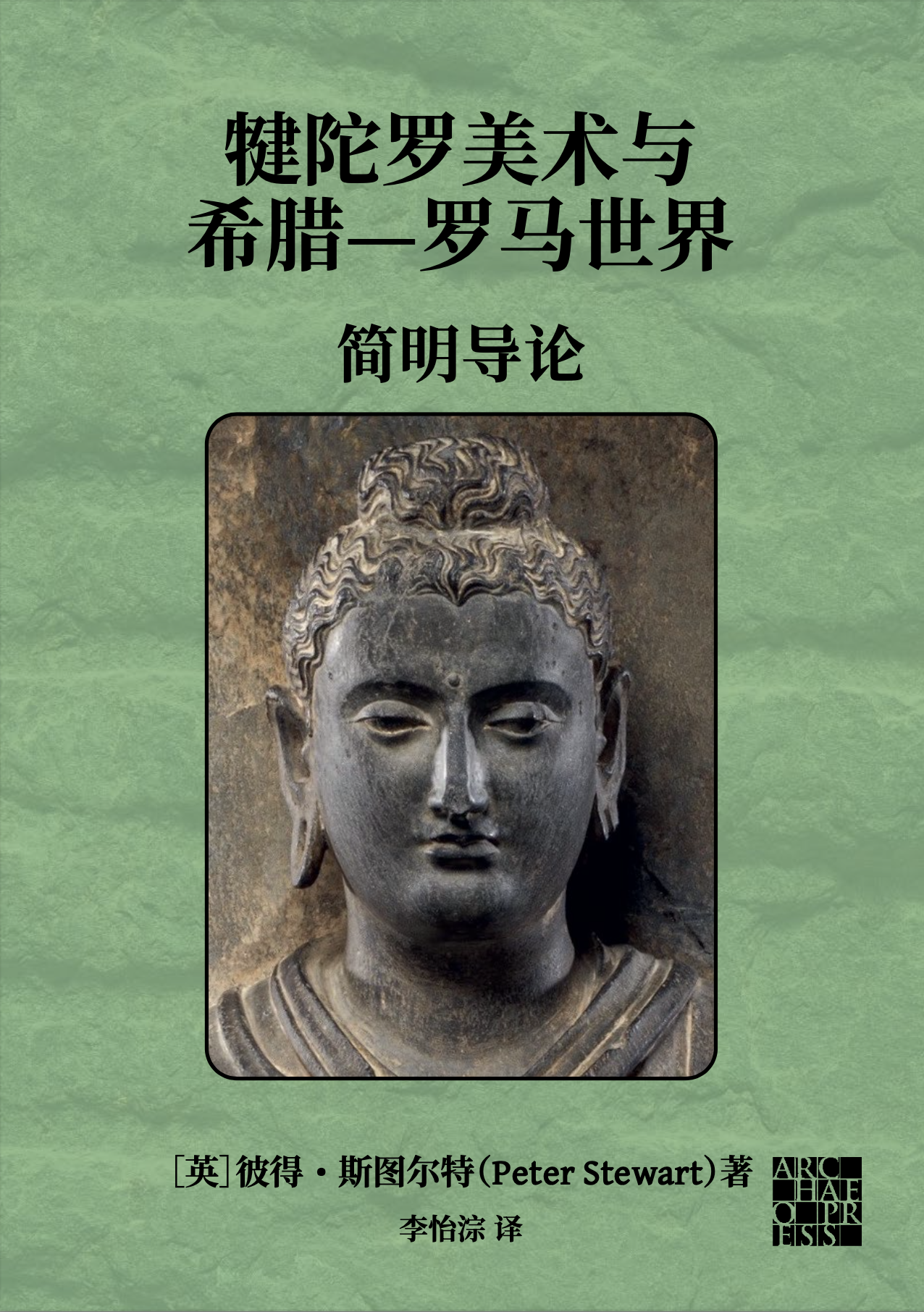
Gandharan Art and the Classical World - Chinese translation
犍陀罗美术与希腊 – 罗马 世界:简明导论
by 英]彼得·斯图尔特(Peter Stewart) 著 李怡淙 译
Published December 2024
公元后的最初几世纪间,犍陀罗以一隅之地(以现代巴基斯坦北部为中心),孕育出非同凡 响的佛教美术传统,其巨大影响最终遍及整个亚洲。犍陀罗造像主要用于装饰寺院和佛塔, 颂扬佛陀本人、他的生平故事,以及佛教宇宙中的众多神圣角色。自从19世纪这一美术形式 被重新发现以来,其最为引人入胜,又耐人寻味的方面之一,便是在多大程度上借鉴了源自 数千公里以西的希腊与罗马艺术传统。 本书受牛津大学古典艺术研究中心犍陀罗连接项目启发,提供了对犍陀罗美术及其与希 腊—罗马地中海世界神秘关联的导论。书中通俗易懂地阐释了犍陀罗美术的古今语境、该 领域的研究现状,并对进一步深入学习提供了指导。 Download available from Archaeopress (more information and links below COMING SOON) 可以在这里下载 https://www.archaeopress.com/Archaeopress/Products/9781803278650
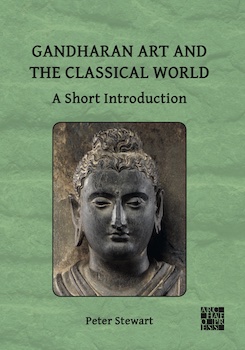
Gandharan Art and the Classical World
A Short Introduction
by Peter Stewart
Published December 2023
This book offers an introduction to Gandharan art and the mystery of its relationship with the Graeco-Roman world of the Mediterranean. It presents an accessible explanation of the ancient and modern contexts of Gandharan art, the state of scholarship on the subject, and guidance for further, in-depth study.
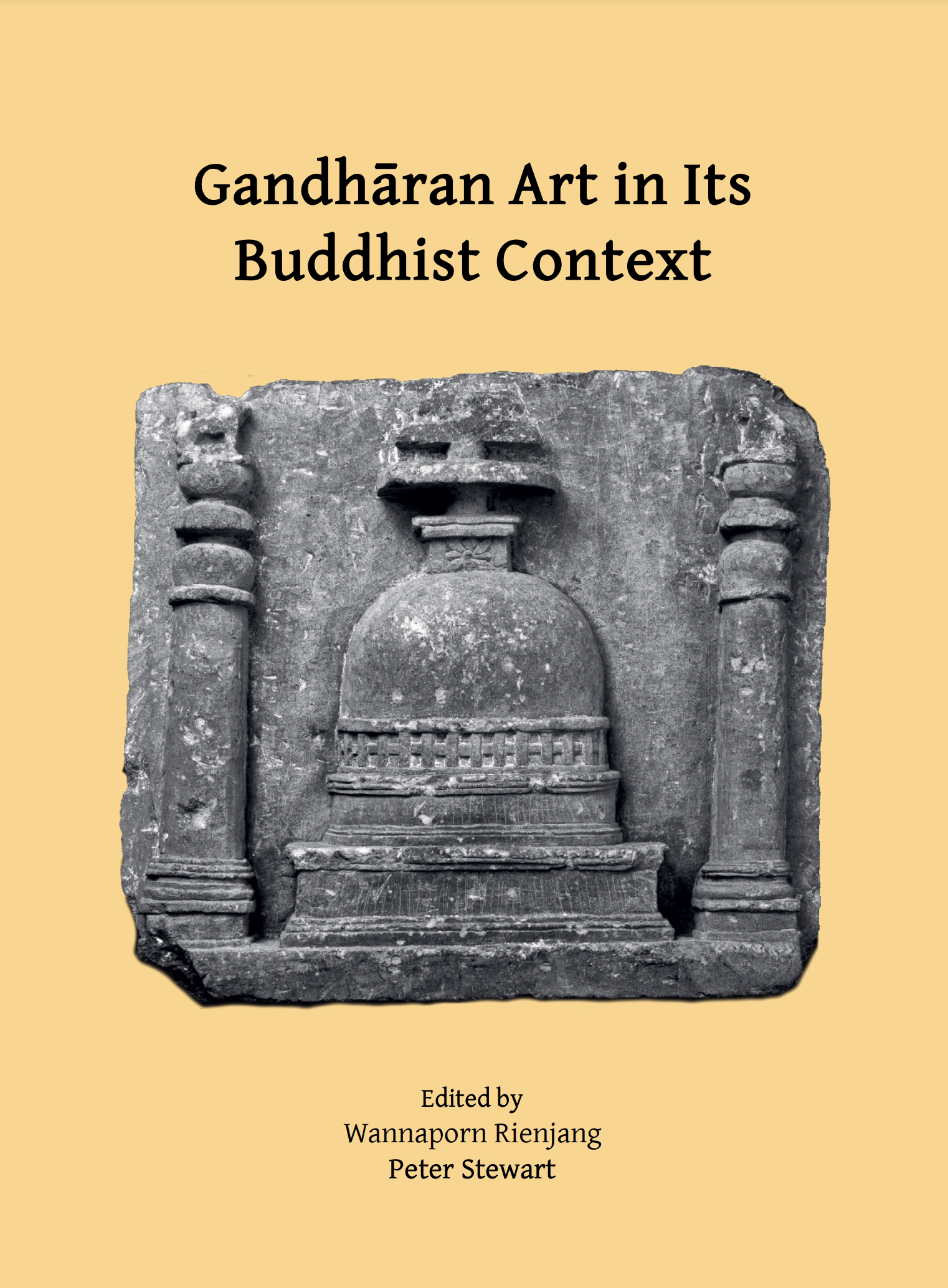
Gandharan Art in Its Buddhist Context
edited by Wannaporn Rienjang and Peter Stewart
DOI 10.32028/9781803274737
Published March 2023
This fifth and final collection of workshop papers from the Gandhara Connections project addresses one of the most fundamental topics in the field: the religious functions and meanings of Gandharan sculpture. Five papers from the workshop look at dedicatory practices in Buddhist monasteries, the interpretation of Buddha iconography, and insights from archaeological excavation and survey in Swat and Malakand.
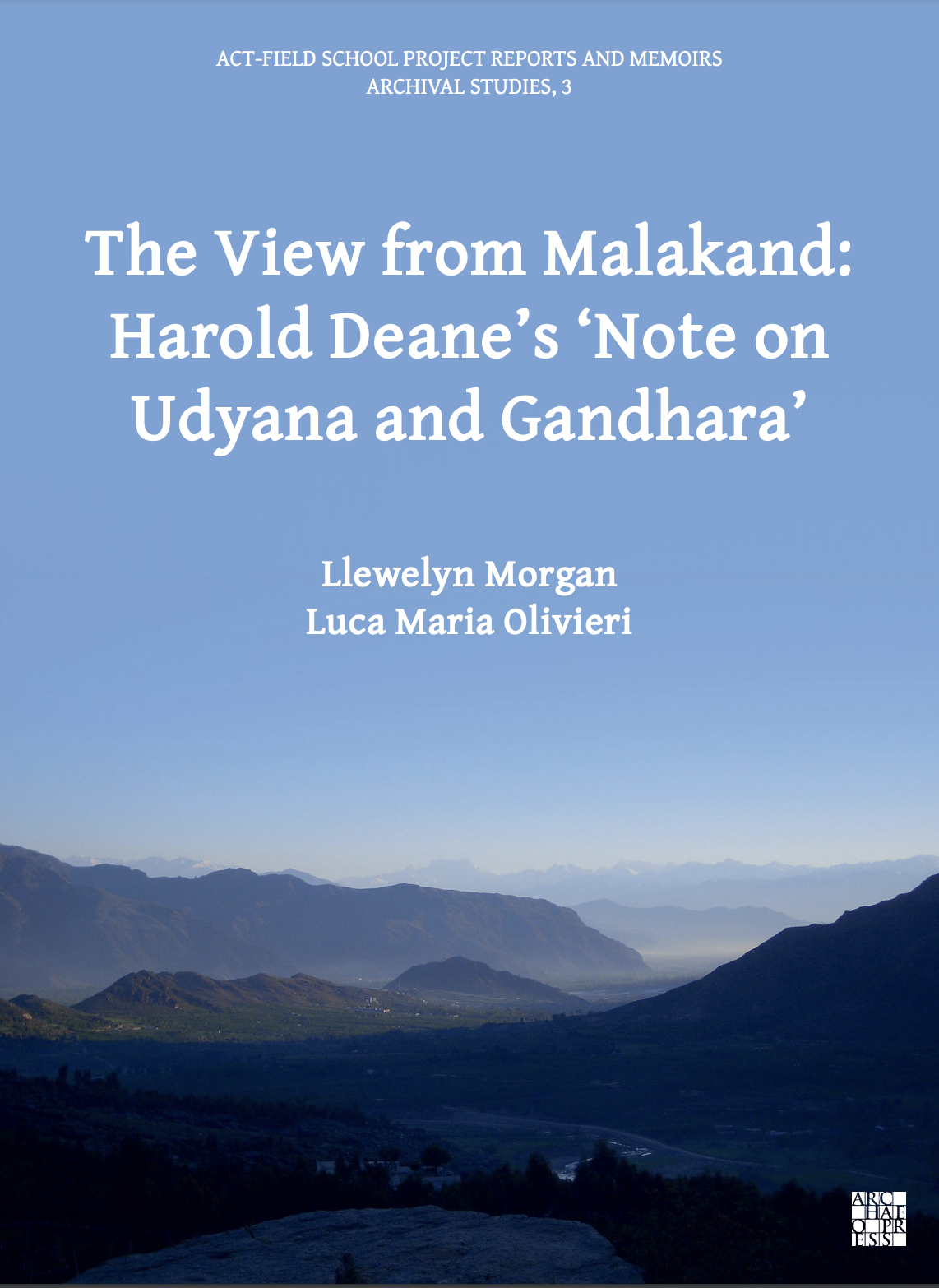
The View from Malakand
Harold Deane’s ‘Note on Udyana and Gandhara’
by Llewelyn Morgan and Luca Maria Olivieri
ISBN 9781803274744 (e-version)
DOI 10.32028/9781803274737
Published May 2022
This volume presents, annotates and contextualizes the newly discovered manuscript of Harold Deane's seminal account of the Gandharan antiquities of Swat.
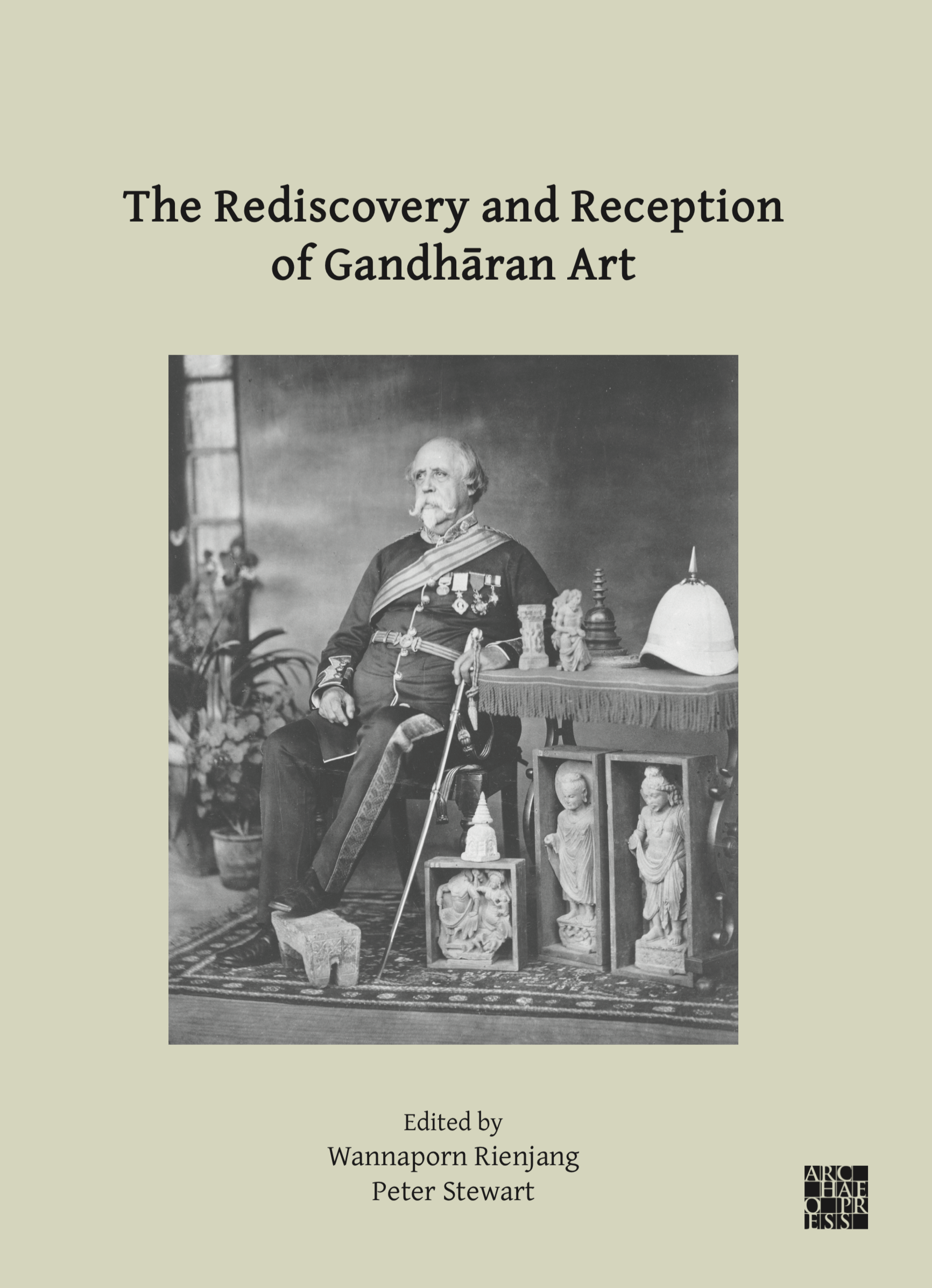
The Rediscovery and Reception of Gandharan Art
Proceedings of the Fourth International Workshop of the Gandhāra Connections Project, University of Oxford, 24th-26th March, 2021
edited by Wannaporn Rienjang and Peter Stewart
ISBN 978-1-80327-233-7
ISBN 978-1-80327-234-4 (e-Pdf)
DOI: http://doi.org/10.32028/9781803272337
Published March 2022
From the archaeologists and smugglers of the Raj to the museums of post-partition Pakistan and India, from coin-forgers and contraband to modern Buddhism and contemporary art, this fourth volume of the Classical Art Research Centre’s Gandhāra Connections project presents the most recent research on the factors that mediate our encounter with Gandhāran art.
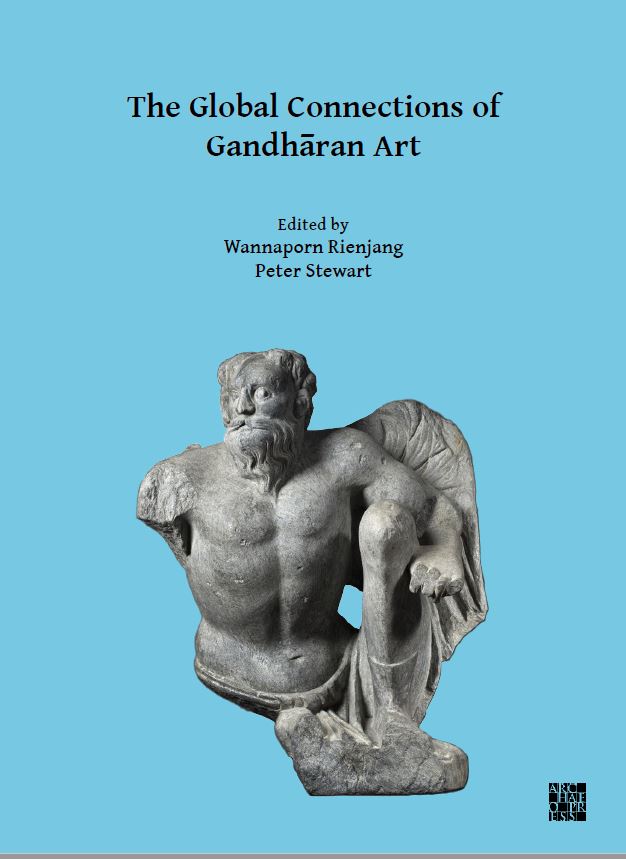
The Global Connections of Gandharan Art
Proceedings of the Third International Workshop of the Gandhāra Connections Project, University of Oxford, 18th-19th March, 2019
edited by Wannaporn Rienjang and Peter Stewart
ISBN 978-1-78969-695-0
ISBN 978-1-78969-696-7 (e-Pdf)
DOI: 10.32028/9781789696950
Published September 2020
The third volume of the Gandhara Connections project at Oxford University’s Classical Art Research Centre presents a range of studies on the relationship of Gandhara to other art traditions. It addresses the project's key theme – the relationship between Gandharan art and the cultures of the Roman Empire and Greece – as well as examining the influence of this region on imagery elsewhere in Central Asia, South Asia, and China.
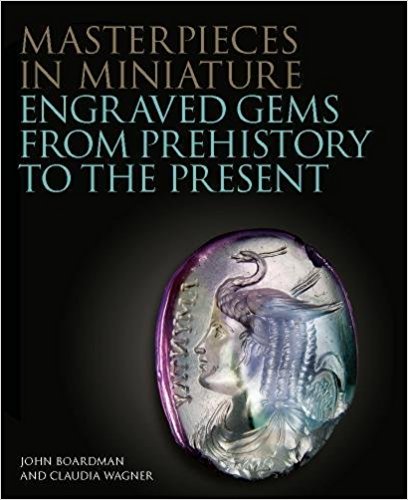
Masterpieces in Miniature (The Philip Wilson Gems and Jewellery Series)
by Claudia Wagner and Sir John Boardman
Published January 2020
The creation of miniature intaglios - or incised carvings - which could be impressed on clay or wax was one of the earliest crafts of civilisation. To this the Greeks added relief cameos, while comparable skills were lavished on the decoration of metal finger rings. These artefacts record subjects of significance for their period and place but are also the direct expression of an artist's skills and imagination. Engraved gems were collected first by the ancient Romans and then throughout the Renaissance were a source for knowledge of `classical' subjects and styles, when they were copied - from Michelangelo to Rubens - by the foremost artists of the day. The gemstones explored here are from a distinguished collection made in the earlier twentieth century by a notable connoisseur of ancient art. Many originate from named older European collections and were previously unknown to scholars and collectors. The authors have sought to offer a balanced selection of earlier eastern and Greek stones, alongside others from the neo-classical era. The book offers a survey of the finest products of the gems craft over millennia.
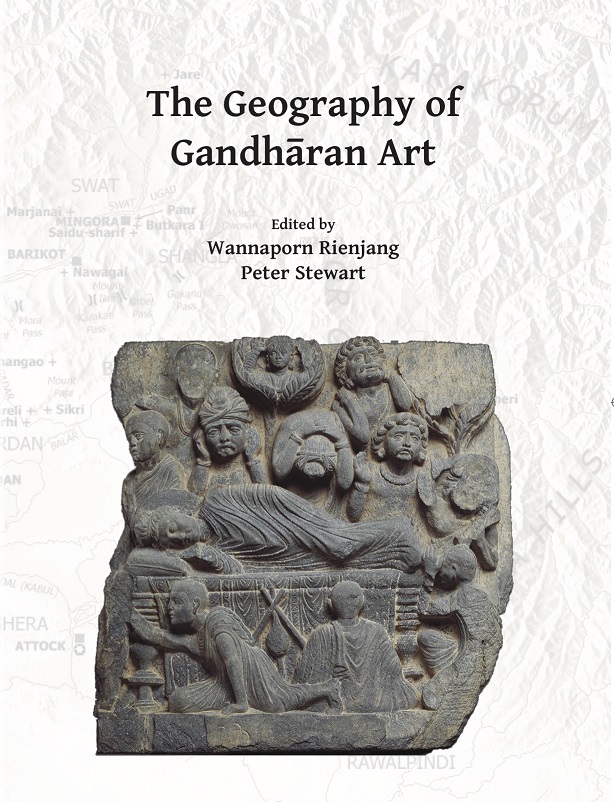
The Geography of Gandharan Art
Proceedings of the Second International Workshop of the Gandhāra Connections Project, University of Oxford, 22nd-23rd March, 2018
edited by Wannaporn Rienjang and Peter Stewart
ISBN 978 1 78491 855 2
ISBN 978 1 78491 856 (e-Pdf)
DOI: 10.32028/9781789691863
Published March 2019
This second volume of the Gandhara Connections project at Oxford University’s Classical Art Research Centre presents the proceedings of a workshop held in March 2018. Its aim is to pick apart the regional geography of Gandhāran art, presenting new discoveries at particular sites, textual evidence, and the challenges and opportunities of exploring Gandhāra’s artistic geography.
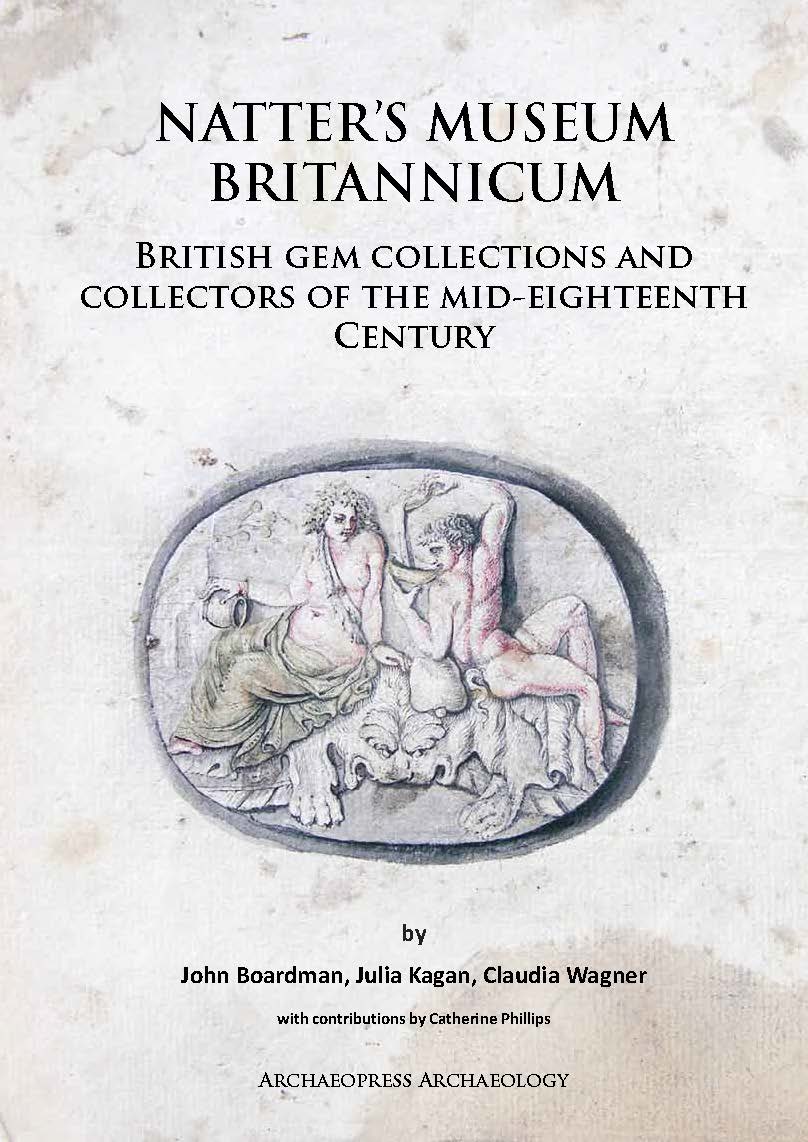
Natter's Museum Britannicum
British Gem Collections and Collectors of the Mid-Eighteenth Century
by Sir John Boardman, Julia Kagen and Claudia Wagner with contributions by Catherine Phillips
Published January 2019
The German gem-engraver, medallist, and amateur scholar Lorenz Natter (1705- 1763), was so impressed by the size and quality of the collections of ancient and later engraved gems which he found in Britain that he proposed the publication of an extraordinarily ambitious catalogue – Museum Britannicum – which would present engravings and descriptions of the most important pieces. He made considerable progress to this end, producing several hundred drawings, but in time he decided to abandon the near completed project in the light of the apparent lack of interest shown in Britain. Only one of the intended plates in its final form ever appeared, in a catalogue which he published separately for Lord Bessborough’s collection. On Natter’s death the single copy of his magnum opus vanished mysteriously, presumed lost forever.
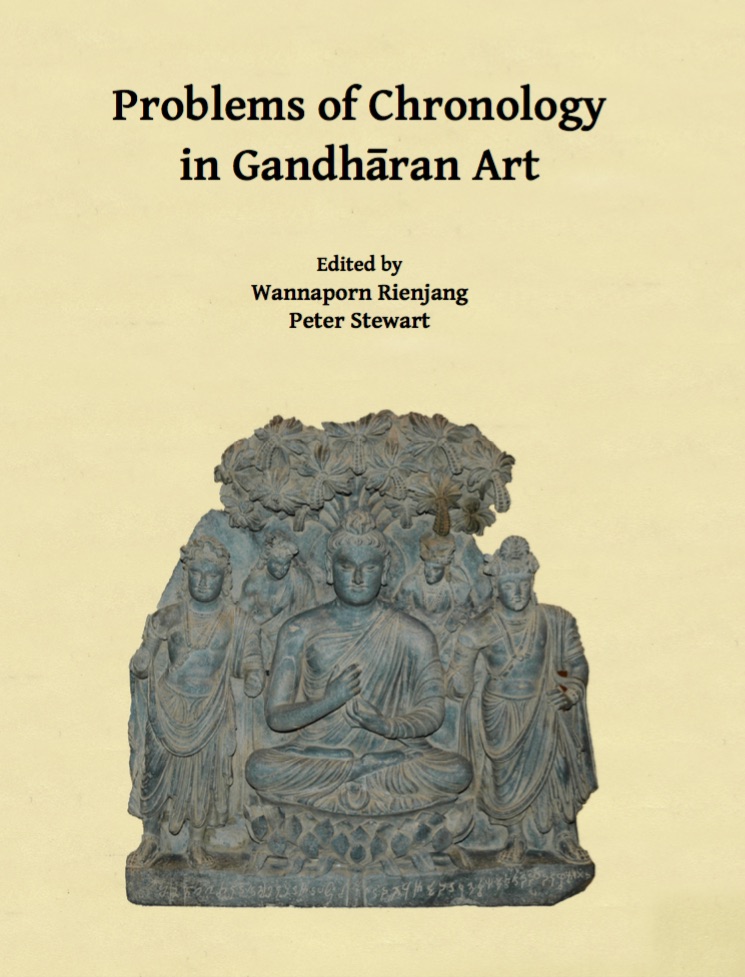
Problems of Chronology in Gandharan Art
Proceedings of the First International Workshop of the Gandhāra Connections Project, University of Oxford, 23rd-24th March, 2017
edited by Wannaporn Rienjang and Peter Stewart
ISBN 978 1 78491 855 2
ISBN 978 1 78491 856 (e-Pdf)
DOI: 10.32028/9781784918552
Published January 2018
This is the first publication of the Gandhāra Connections project at the University of Oxford’s Classical Art Research Centre, which has been supported by the Bagri Foundation and the Neil Kreitman Foundation. It presents the proceedings of the first of three international workshops on fundamental questions in the study of Gandhāran art, held at Oxford in March 2017.
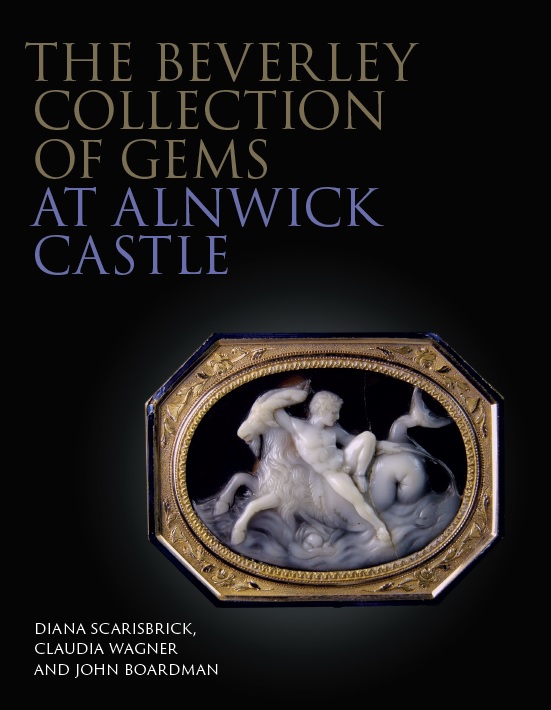
The Beverley Collection of Gems at Alnwick Castle
by Diana Scarisbrick, Claudia Wagner, and Sir John Boardman
Published January 2018
Alnwick Castle, ancestral seat of the Earls of Northumberland – the House of Percy – was built as a border fortress against the Scots in the twelfth century, if not earlier. Substantially enlarged in the fourteenth and fifteenth centuries, and remaining in Percy family hands to this day, it stands now as a prime example of robust stone defensive architecture. Much visited and admired for its impressive exterior and interior, this dramatic stronghold and stately home is the setting for one of the most distinguished assemblages of gems in Great Britain still in private hands.
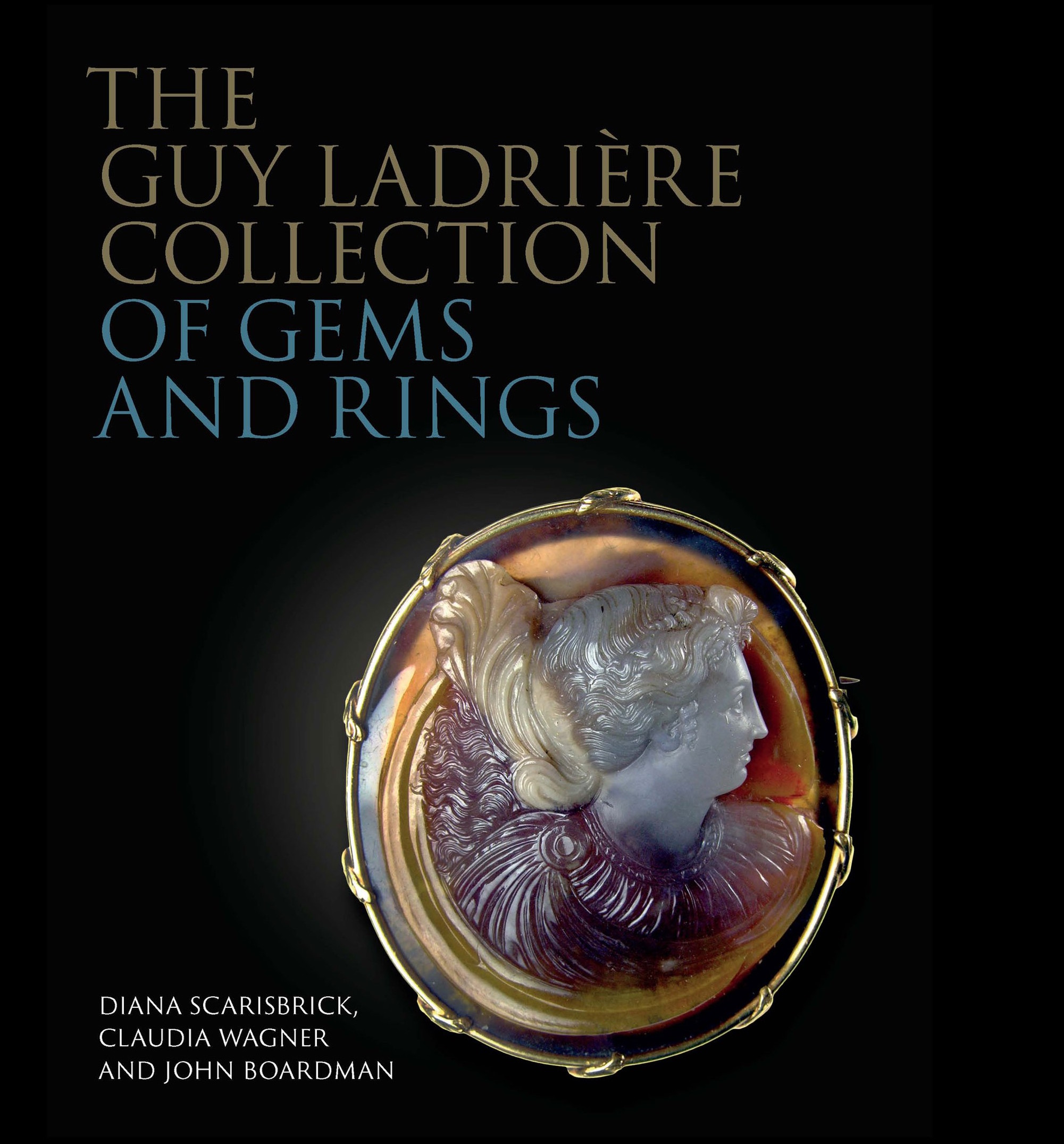
The Ladrière Collection of Gems and Rings
by Diana Scarisbrick, Claudia Wagner, and Sir John Boardman
Published January 2017
One of the world's finest assemblages of rings and gemstones, the Guy Ladrière Collection in Paris is of major art-historical importance. This handsome volume, co-written and compiled by CARC's researchers, is the first to catalogue, illustrate and describe all the pieces in the collection. Comprising some three hundred items, and including a rich and varied mixture of cameos and intaglios, the collection ranges from ancient artefacts originating in the Minoan period to gemstones and rings of the nineteenth century. It also boasts many medieval pieces, Christian crystal plaques and Lombardic stones with inscriptions.
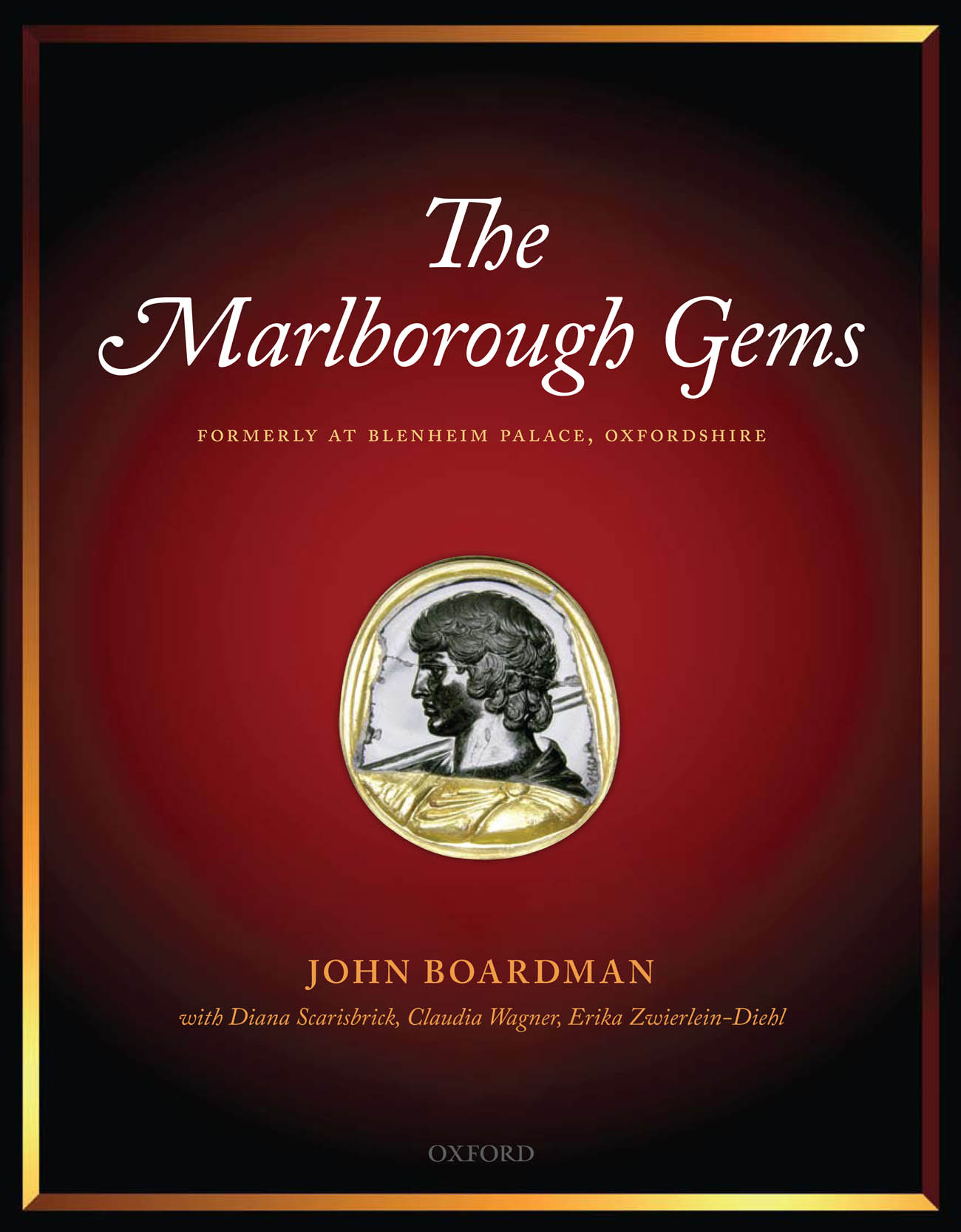
The Marlborough Gems. Formerly at Blenheim Palace, Oxfordshire
by John Boardman. With Diana Scarisbrick, Claudia Wagner and Erika Zwierlein-Diehl.
ISBN 978 0 19 923751 7
Published January 2009
The collection of about 800 engraved gems of the Fourth Duke of Marlborough (1739-1817) at Blenheim Palace was the largest and most important of the 18th-century English collections. It comprised a Renaissance collection of the Gonzaga Dukes of Mantua, acquired by Lord Arundel in the mid-17th century; the mid-18th-century collection of Lord Bessborough; and the Duke's own acquisitions in Italy and elsewhere.
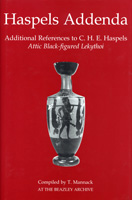
Volume ISBN 0 19 726315 1
Haspels Addenda
compiled by T. Mannack at the Beazley Archive
Published January 2006
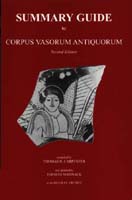
Summary Guide to Corpus Vasorum Antiqurorum (second edition)
updated by T. Mannack at the Beazley Archive
ISBN 0 19 726203 1
Published January 2000
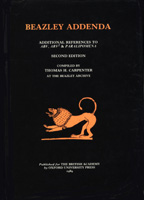
Beazley Addenda (second edition)
compiled by T.H. Carpenter at the Beazley Archive
ISBN 0 19 726069 1
Published January 1989
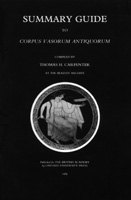
Summary Guide to Corpus Vasorum Antiquorum
compiled by T.H. Carpenter at the Beazley Archive
ISBN 0 19 726033 0
Published January 1984
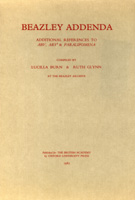
Beazley Addenda, Additional References to ABV, ARV & Paralipomena
compiled by L. Burn and R. Glynn at the Beazley Archive
ISBN 0 19 726018 7
Published January 1982
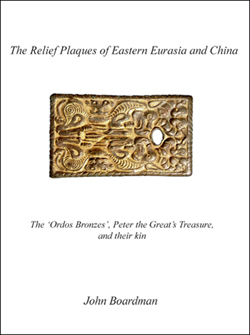
The Relief Plaques of Eastern Eurasia and China
The 'Ordos Bronzes', Peter the Great's Treasure, and their kin
by John Boardman
This is a study of the relief plaques of the 'Ordos bronzes' and their kin in north China and Central Asia, including Peter the Great's Treasure in the State Hermitage, St Petersburg. It attempts to classify them by shape, style and iconography, and to trace their origins, listing and illustrating as many specimens as seemed necessary to convey to the reader the unity of individual series as well as their variety. One class is distinguished as probably made by the Chinese and for the Chinese after their adoption of nomad dress and tactics for archer cavalry in the later 4th century BC.
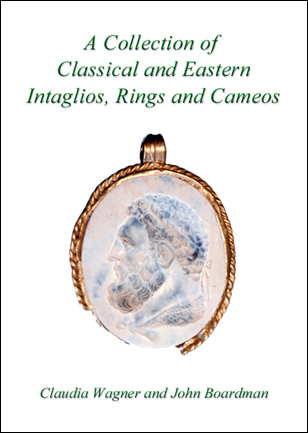
Volume I
A Collection of Classical and Eastern Intaglios, Rings and Cameos
by C. Wagner and J. Boardman
This volume publishes Classical and Eastern intaglios, rings and cameos, a selection from a private collection formed between 1921 and about 1970. Almost all are published here for the first time but they include examples from important earlier collections and several inscribed. They range from 3rd-millennium BC cylinder seals of Mesopotamia, to Neo-classical engravings of the 19th century AD, and include prime specimens also of Greek, Etruscan, Roman and Sasanian glyptic.
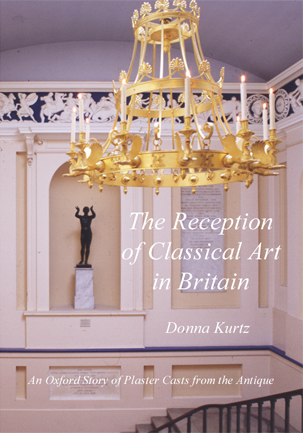
Volume I
The Reception of Classical Art in Britain
An Oxford Story of Plaster Casts from the Antique
by D. Kurtz
This volume of the series places archaeology, history of art and British antiquarianism in the wider context of Europe's cultural heritage. The Story focuses on antique sculpture, the principal type of classical art known to artists, collectors and scholars from the Renaissance until the later nineteenth century.
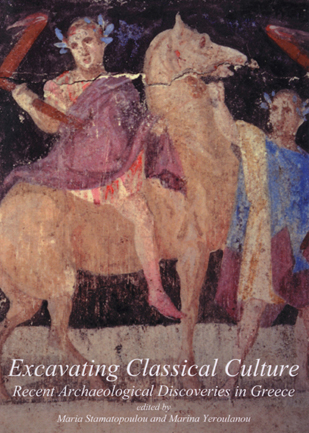
Volume I
Excavating Classical Culture
Recent Archaeological Discoveries in Greece
edited by M. Stamatopoulou and M. Yeroulanou
This volume publishes more than twenty papers on recent work in Greece from a remarkable, in some respects unique, meeting of archaeologists, which took place in Somerville College, University of Oxford, in March 2001. Recent archaeological activity in Greece has yielded a wealth of material enhancing our knowledge of classical Greece. The colloquium was the first collective presentation of these finds in the United Kingdom, offering a rare opportunity for scholars to acquaint themselves with the recent discoveries. The papers draw on first-hand material provided by prominent scholars who are currently working on archaeological sites in Greece.
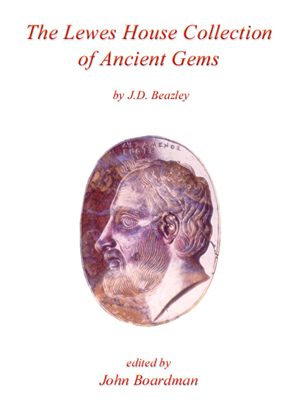
Volume II
The Lewes House Collection of Ancient Gems
by J.D. Beazley
edited by John Boardman
The collection of classical gems at Lewes House in Sussex belonging to Edward Perry Warren (1860-1928) was one of the finest of its day, containing many masterpieces, not least the signed gem by Dexamenos shown on the dust-jacket below.
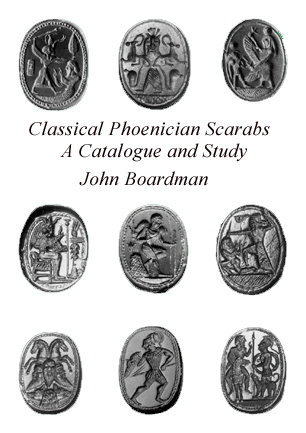
Volume II
Classical Phoenician Scarabs
A Catalogue and Study
by J. Boardman
This volume presents Phoenician green jasper scarabs found in the Mediterranean world, from excavations and in collections. They were being made throughout the period of the Achaemenid Persian Empire, from the late 6th to mid-4th centuries BC, and a case is made here for their production in Phoenicia itself, rather than in the Punic west, where most have so far been found.
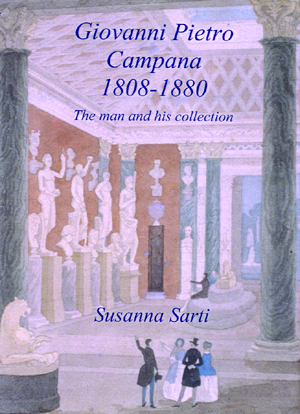
Volume II
Giovanni Pietro Campana (1808-1880)
The man and his collection
by S. Sarti
Giovanni Pietro Campana 1808-1880, the man and his collection by Susanna Sarti (DPhil, Oxon) examines the personality of the collector in the context of his period and reconstructs his famous museum from documentary sources, many previously unpublished. Director of the Bank of the Monte di Pietà in Rome, Campana amassed a great fortune and a remarkable collection of antiquities and fine art.
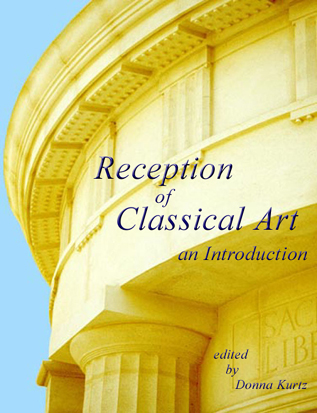
Volume III
Reception of Classical Art, an Introduction
edited by D.C. Kurtz
Serendipity lies behind this modest publication. A series of lectures took place in the autumn of 2003 on The Reception of Classical Art designed to complement two options in the Master of Studies in Classical Archaeology. It was decided to publish the lectures as delivered, without footnotes, but with bibliographies specifically chosen for our students. The book is dedicated to "the first cohort of students in the undergraduate degree course in the History of Art, October 2004".
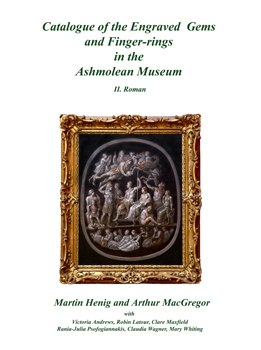
Volume III
Catalogue of the Engraved Gems and Finger-rings in the Ashmolean Museum II. Roman
by Martin Henig and Arthur MacGregor, with Victoria Andrews, Robin Latour, Clare Maxfield, Rania-Julia Psofogiannakis, Claudia Wagner, Mary Whiting
Oxford University's collection of Greek, Etruscan and Roman gems and rings, in the Ashmolean Museum, is one of the most representative in the world. This volume publishes the Roman gems and finger-rings; the Greek and Etruscan were published by John Boardman and Marie-Louise Vollenweider in 1978. The second volume offers full descriptions, comment and enlarged photographs. Bequests from important collectors, such as Arthur Evans, Charles Drury Fortnum and G.J. Chester have ensured that the full range of styles and engraving is represented in the collection.
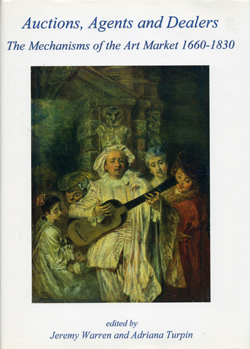
Volume III
Auctions, Agents and Dealers
The mechanisms of the Art Market 1660-1830
edited by Jeremy Warren and Adriana Turpin
In recent years the Wallace Collection has begun to develop more actively its profile as a leading centre for the study of this history of collecting, especially, but not exclusively, in Britain and France during the eighteenth and nineteenth centuries. This conference, which took place at the Wallace Collection on 12-13 December 2003, set out to examine aspects of seventeenth to early nineteenth-century collecting from the perspective of the art market, including the mechamisms devised to create clients and markets, the networks set up by agents and dealers, and collectors' relationships with dealers and the market.
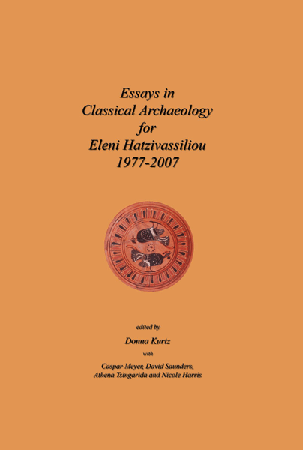
Volume IV
Essays in Classical Archaeology for Eleni Hatzivassiliou 1977-2007
edited by Donna Kurtz with Caspar Meyer, David Saunders, Athena Tsingarida and Nicole Harris
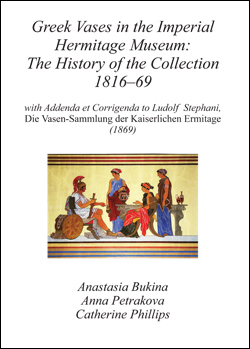
Volume IV
Greek Vases in the Imperial Hermitage Museum: The History of the Collection 1816-69
with Addenda et Corrigenda to Ludolf Stephani, Die Vasen-Sammlung der Kaiserlichen Ermitage (1869)
by Anastasia Bukina, Anna Petrakova and Catherine Phillips
ISBN 9781407311326
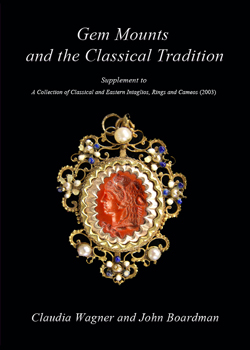
Volume IV
Gem Mounts and the Classical Tradition
Volume IV Gem Mounts and the Classical Tradition Supplement to A Collection of Classical and Eastern Intaglios, Rings and Cameos (2003)
by Claudia Wagner and John Boardman
This volume is a supplement to Classical and Eastern Intaglios, Rings and Cameos.
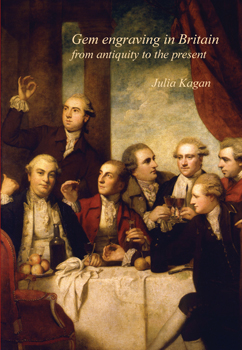
Volume V
Gem engraving in Britain from antiquity to the present
by Julia Kagan
ISBN 978-1-9037-6712-2
In this volume the author traces the history of gem engraving in Britain from antiquity to the present. By focusing on engravers, patrons and collections she introduces the reader to a rich corpus of material, assembled here for the first time in any detail. She places the gems and engravers in their historical and social contexts, while providing a sensitive art-historical interpretation. Gem engravers, their works, the relationships between workshops and individuals, are explored and charted meticulously, based on a lifetime of scholarship devoted to gem engraving.
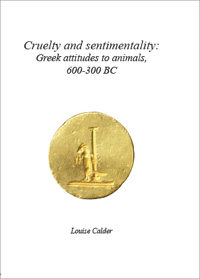
Volume V
Cruelty and sentimentality: Greek attitudes to animals, 600-300 BC
by Louise Calder
This work examines archaeological and literary evidence, between 600 and 300 BC, to discover how ancient Greeks regarded, interacted with, used, and treated tame and domestic animals, as well as some prominent wild species. Of primary interest are relationships between human and animal well-being.




